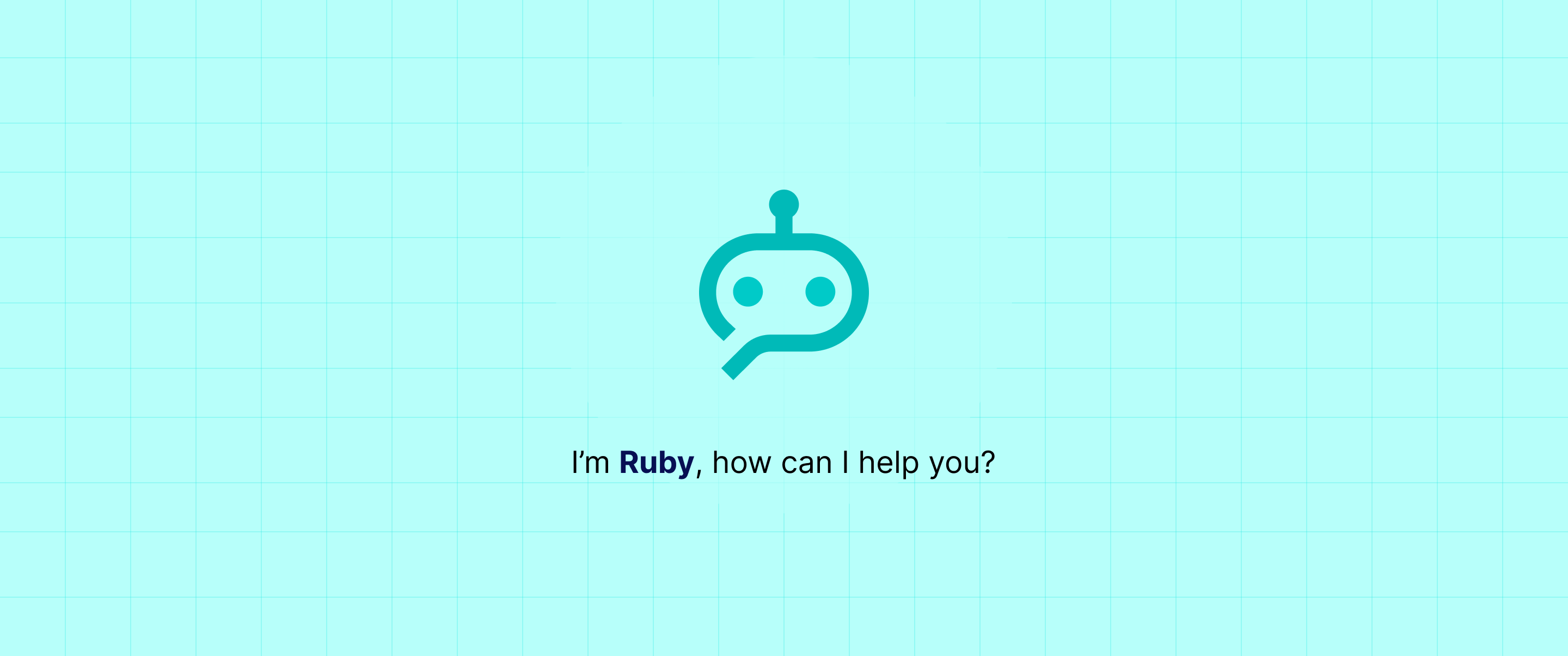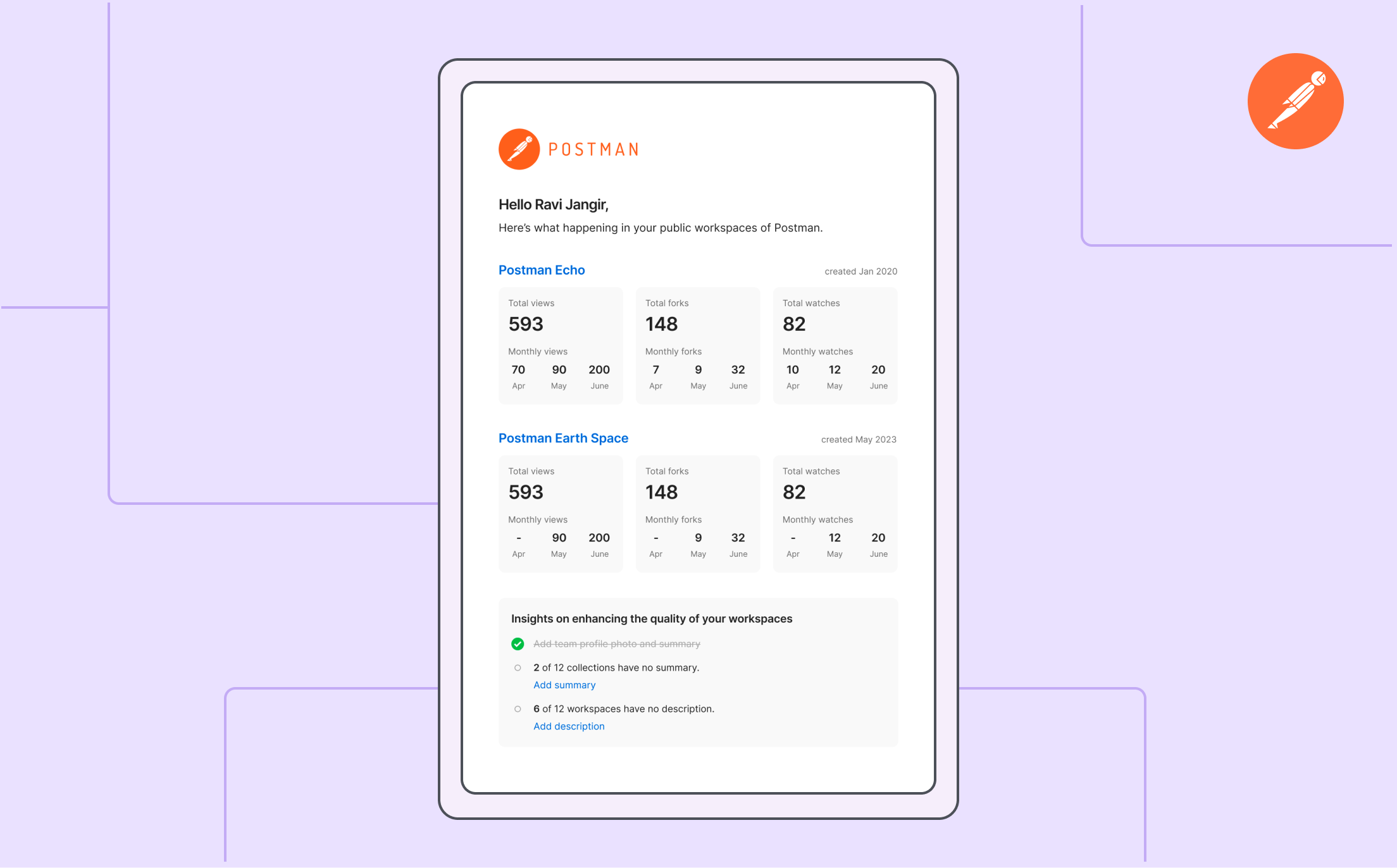About Ruby GenAI
Ruby is the generative AI companion for Rubrik Security Cloud. Rubrik is actively exploring relevant use cases for integrating Ruby into their platform. Recently, they launched a beta feature that integrates Ruby into the in-product help center of Rubrik Security Cloud. When users search for information, Ruby generates AI-powered summaries by pulling content from relevant documents. Depending on the response and the user's needs, they can engage in further conversation with Ruby, similar to how ChatGPT functions.
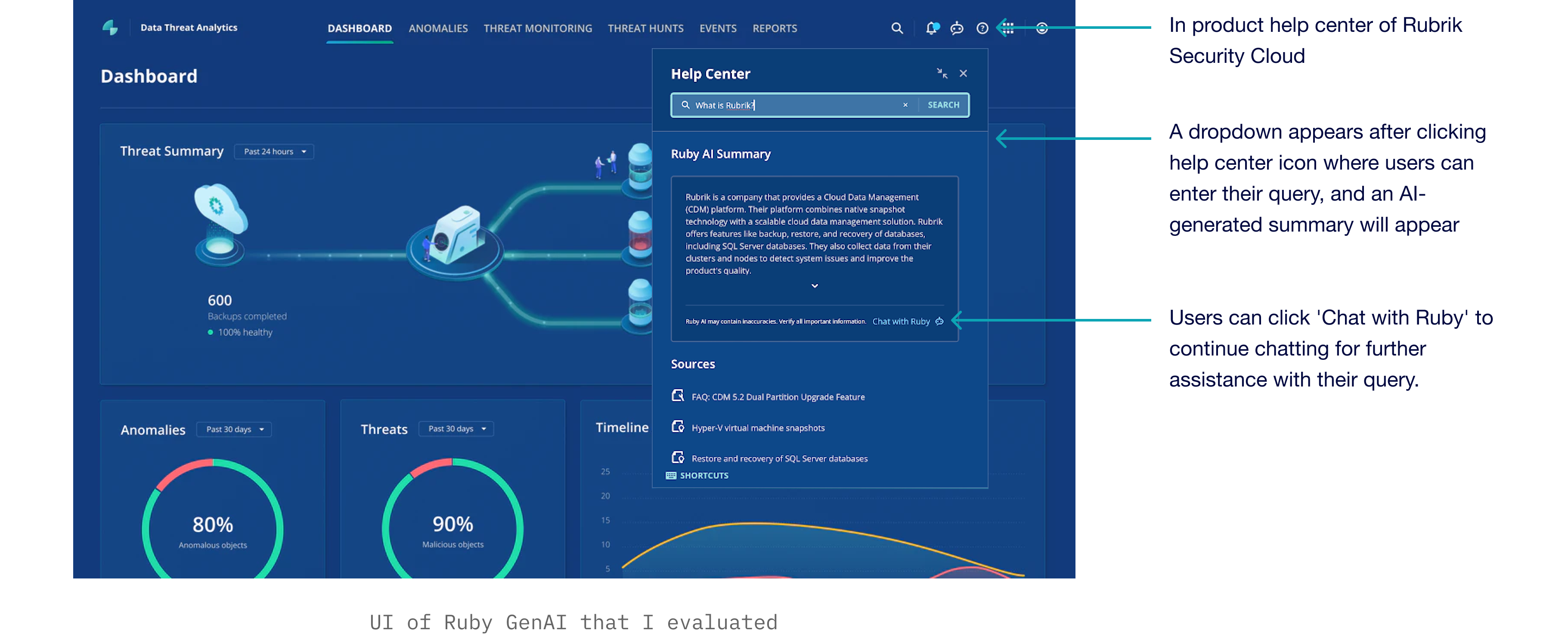
Objective

Research Method
Before initiating the research, I collaborated with the Product Manager to clarify the objectives of this beta feature and to define what specific research objective we aimed to answer and the business objectives we aimed to achieve. Additionally, I consulted with the Engineers who developed the feature to understand the technical aspects of Ruby AI that would be relevant during the research.
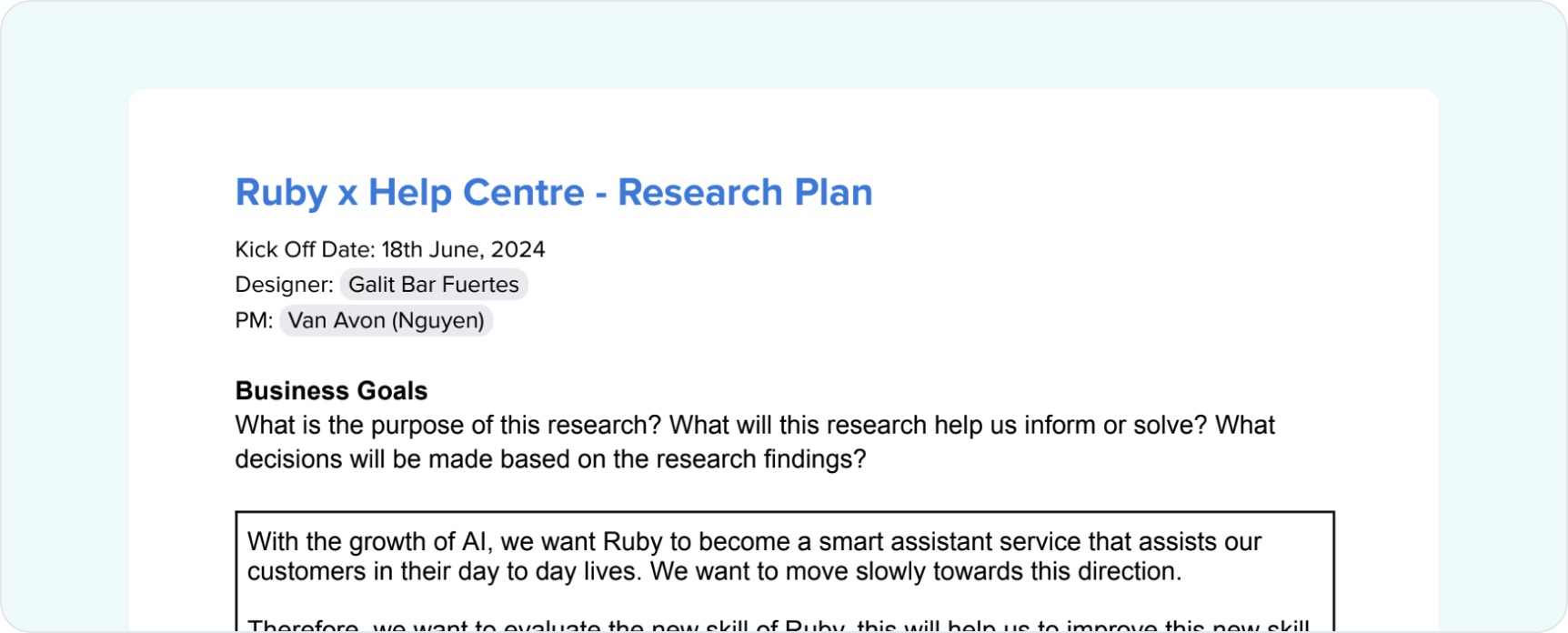
The evaluative research was structured into three key phases: Opening Interviews, Diary Studies, and Closing Interviews.
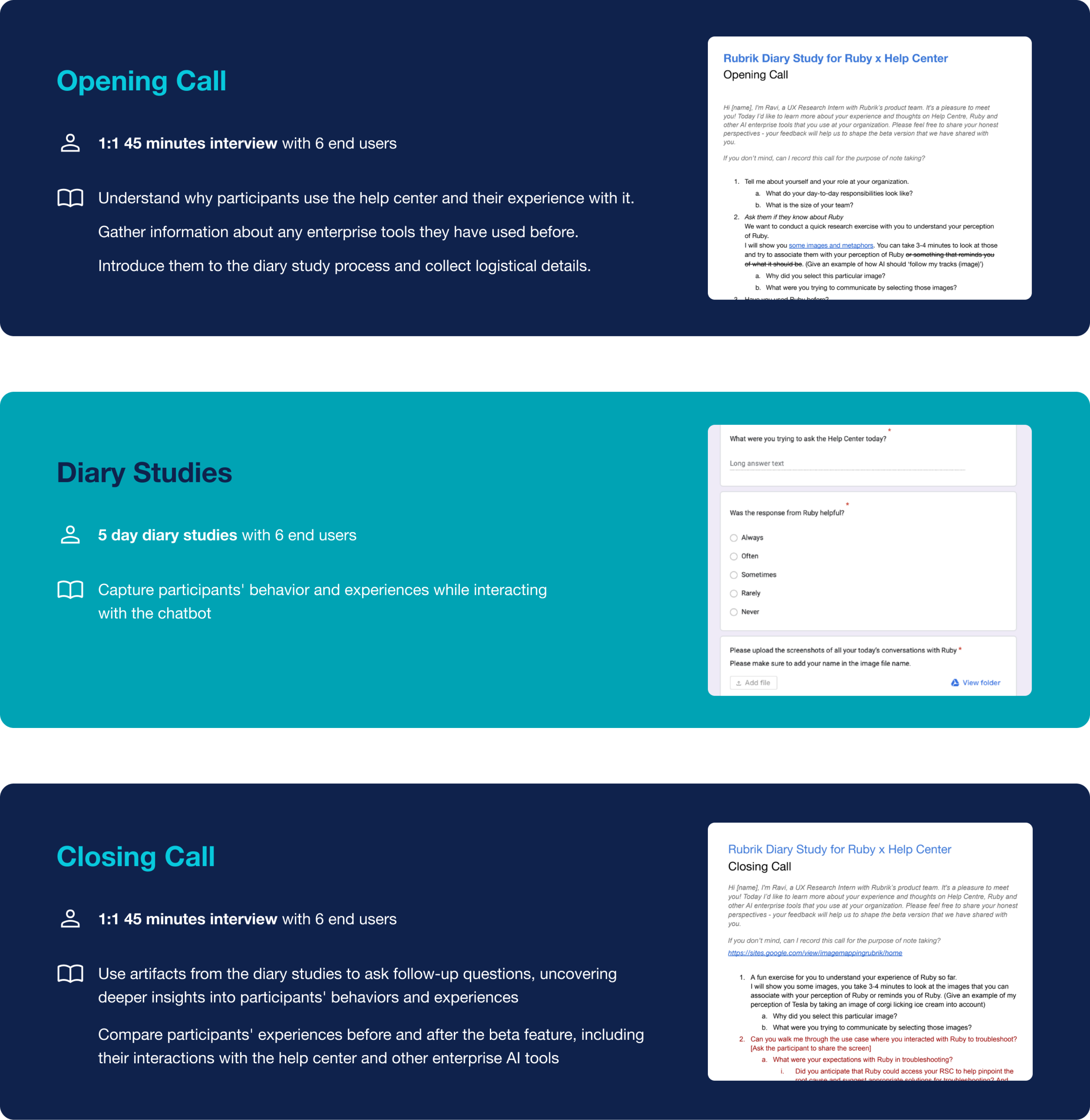

For the interviews, I developed a comprehensive list of questions designed to meet the research objectives. I sought input from my manager, mentor, and key stakeholders, including the Product Manager, Designer, and Developers, to ensure alignment. This collaborative approach helped me create a well-rounded guide for both the opening and closing interviews.
Analysis
I used Dovetail to transcribe the interviews, which I then coded and analyzed to derive key findings. For the diary studies, I exported the data into Excel, where I conducted an in-depth analysis and developed follow-up questions for each participant's closing interview.
Findings
After synthesizing the data and generating findings and recommendations, I presented the insights to key stakeholders. The findings included:
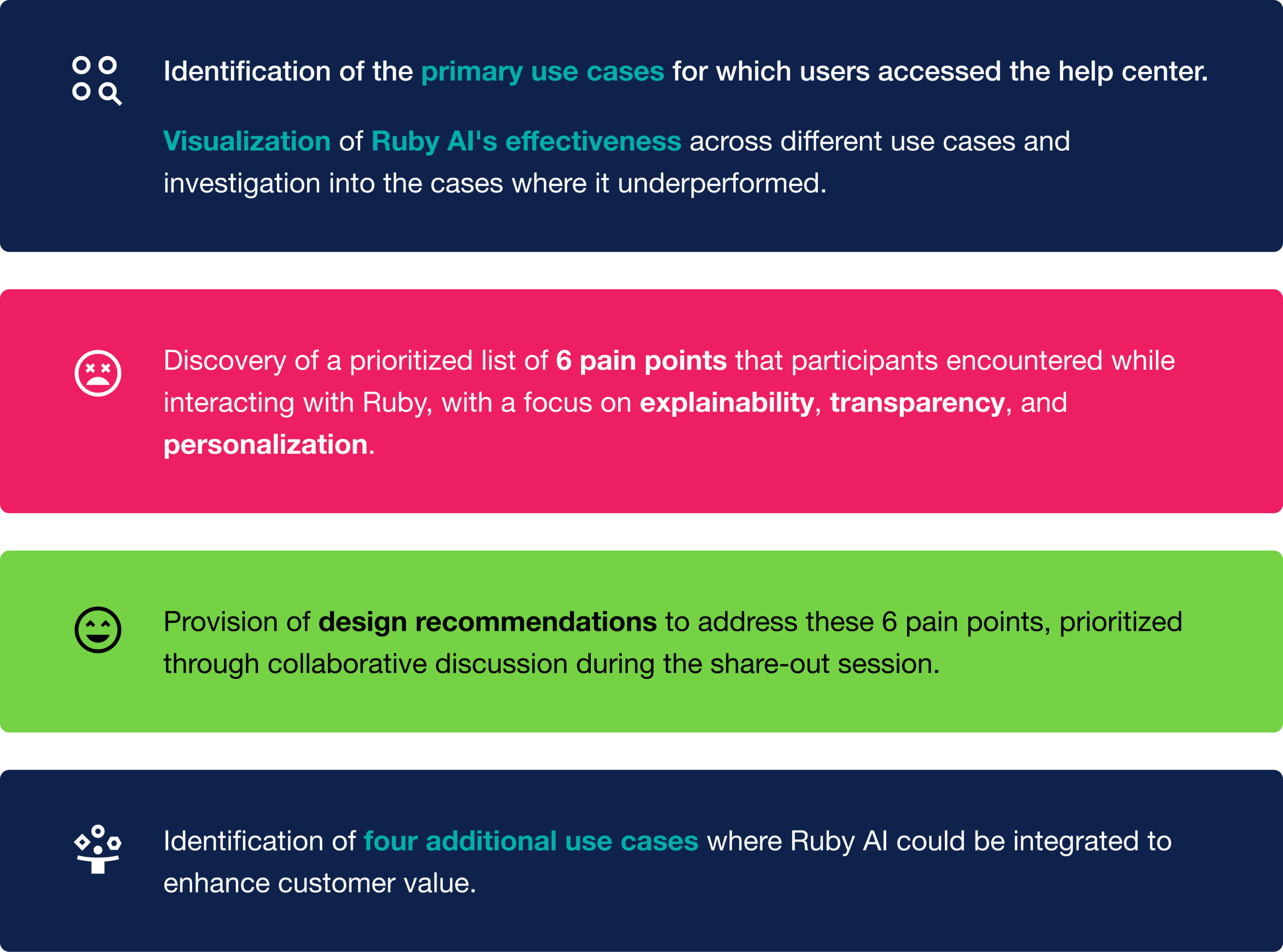
Learnings
Embracing Ambguity
I successfully transformed an initially unclear research goal into a well-defined one by collaborating closely with stakeholders. Through this process, I selected the most appropriate research methodology to address the core objectives.
Effective Communication
I learned the importance of distilling research findings into concise and actionable insights. By tailoring the information to align with the research goals and the specific needs of the team, I ensured that the insights were both relevant and impactful.
Collaboration
I discovered the value of working closely with stakeholders to clarify what is already known, identify assumptions, and determine the critical areas that need exploration. I also honed my ability to integrate feedback from various researchers and stakeholders, resulting in a research plan that effectively addressed all key concerns.
What I would do differently
In retrospect, while I held individual 1:1 meetings with stakeholders to uncover known information, assumptions, and areas for discovery, I realized that some pain points discussed during the share-out were already known. To improve this process, I would conduct a collaborative workshop with all stakeholders at the outset. This would provide a more comprehensive understanding of what is known and what needs to be learned, ensuring that the research plan is even more targeted and efficient.


